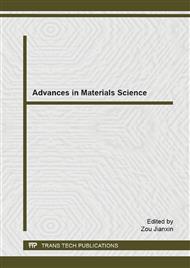p.500
p.503
p.507
p.514
p.519
p.526
p.533
p.540
p.544
Color Stability of Heat-Cured Denture Base Resins
Abstract:
Heat-cured denture base resin is an important component in removable partial dentures and complete dentures, and has been widely used in the clinic. However, during long-term use, its appearance may be affected by varying degrees of color change, affecting the appearance and longevity of the dentures. In this study we examined the color changes and water absorption and solubility of dental base resins to investigate the color stability of four types of resin materials: New Century, Heraeus, Nissin and BASIS-HI. They were soaked in artificial saliva (as control), red wine, cola, coffee and tea separately at 37°C for 1, 4 or 12 weeks. Results are presented on which the color changes of dental base resin materials were associated with different denture base resins, soak solutions and storage times. We found that most of the dental resins became darker at prolonged immersion time. Heraeus resins showed more significant changes after soaking in red wine for 12 weeks, and its water absorption and solubility values were also greater than those of the other three types of resins. The color changes of New Century, Nissin and BASIS-HI soaked in the four solutions were relatively stable. The information obtained here will help optimize maintenance of dentures and also inform choice of denture materials.
Info:
Periodical:
Pages:
519-525
Citation:
Online since:
February 2015
Authors:
Price:
Сopyright:
© 2015 Trans Tech Publications Ltd. All Rights Reserved
Share:
Citation:


